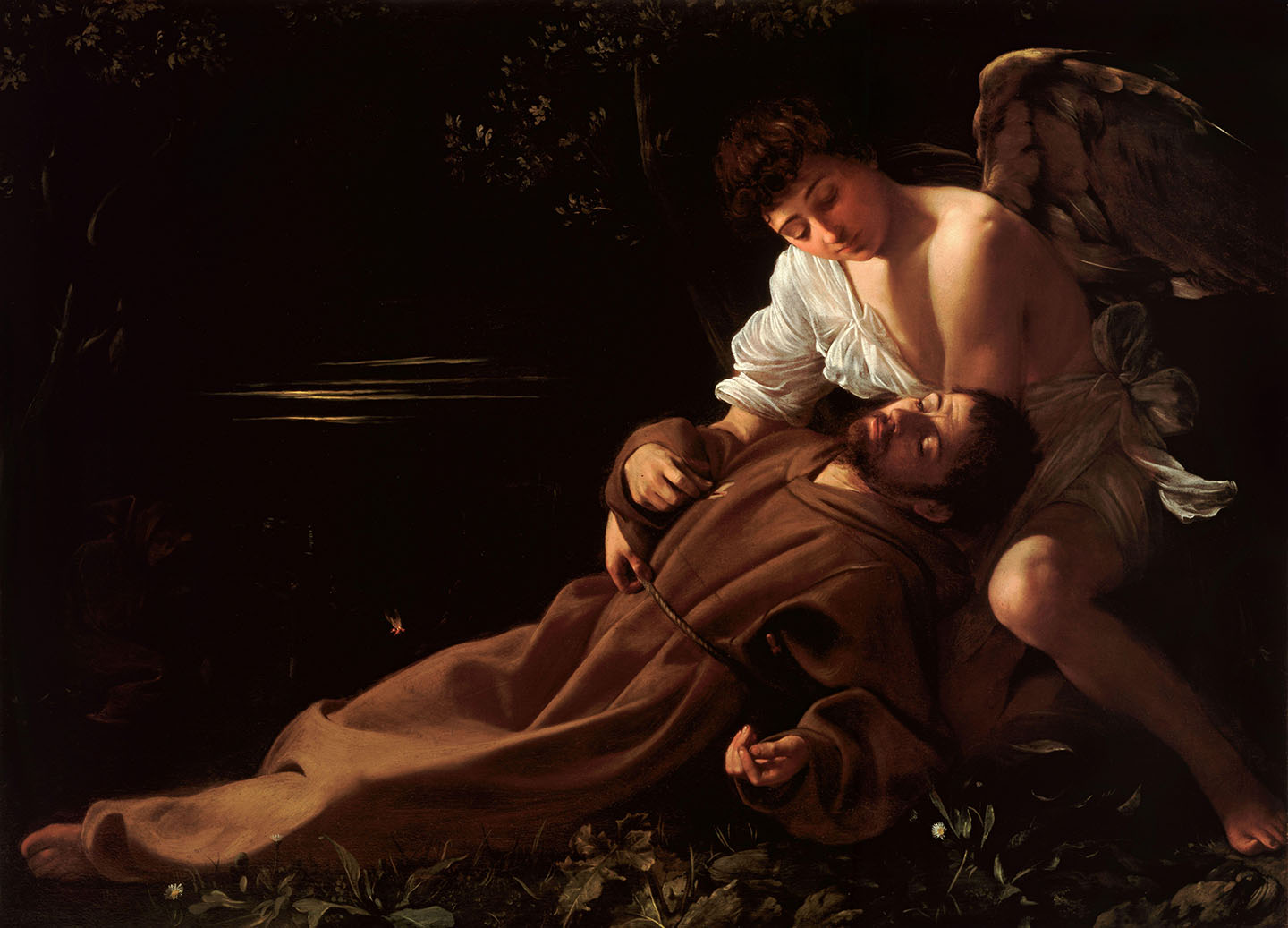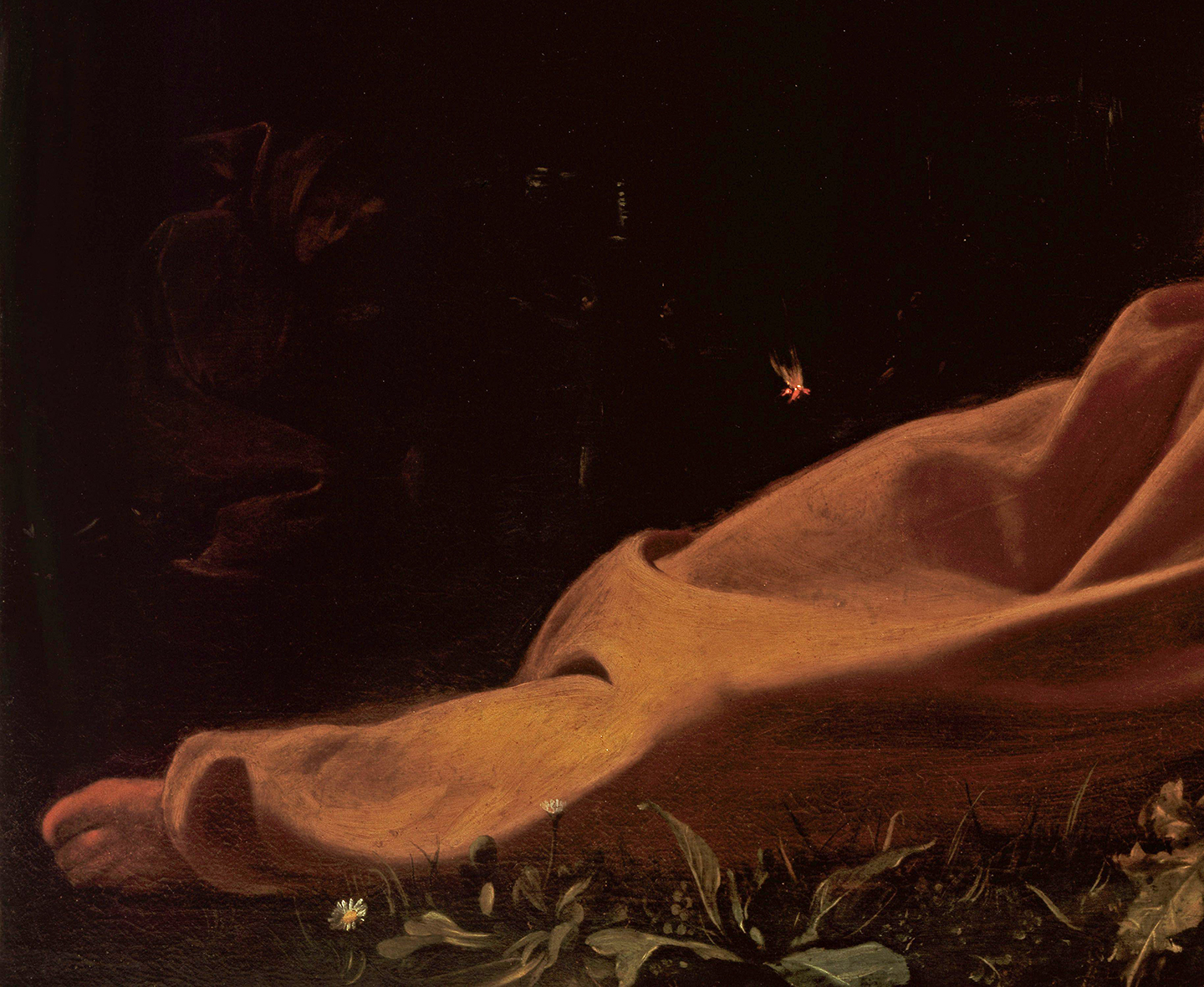


Artists throughout the centuries have been inspired by Saint Francis of Assisi, including Michelangelo Merisi da Caravaggio. One of the artist’s early masterpieces is “Saint Francis of Assisi in Ecstasy,” held in the collection of the Wadsworth Atheneum Museum of Art in Connecticut. This is the artist’s first known religious canvas and one of the most important Baroque paintings in an American museum collection. It showcases Caravaggio’s extraordinary style and technique: the theatrical use of light, naturalistic depictions of people and objects, and psychological narratives.
This painting is currently on view in a special exhibition at London’s National Gallery. The museum has congregated a wide range of artworks to explore the life and legacy of the 13th-century St. Francis that exalts his longstanding significance as patron saint of animals and nature, as well as his commitment to the poor.
After the Protestant Reformation, the Catholic Church amplified its emphasis on devotion to and emulation of saints, with the Italian St. Francis, who renounced his worldly wealth in favor of a life dedicated to poverty and service, being the most popular. The medieval and Renaissance type of portrayal of the saint evolved in the Baroque period to include a new composition: the saint after the stigmatization supported by an angel. This format may have been first introduced in Caravaggio’s “Saint Francis of Assisi in Ecstasy.”
Andrew Graham-Dixon in his biography “Caravaggio: A Life Sacred and Profane” writes, “In every sense—style, iconography, drama—the painting broke new ground.” Caravaggio was the first to show the saint lying down at the moment of the stigmata, wounded on his right side, but with no other signs of the stigmata at his hands and feet, and cradled by a kneeling angel.
In “Saint Francis of Assisi in Ecstasy,” Caravaggio places the figures of the saint and angel close to the picture plane, which allows the viewer to intimately experience their presence and Francis’s ecstatic state. The composition draws inspiration from the established artistic motifs of Christ held by an angel and a Pietà, where the Madonna cradles his body.
The two figures in “Saint Francis of Assisi in Ecstasy” are bathed in a spotlight of divine light, emphasizing this poetic, mystical moment. Caravaggio refers to the established visual depiction of the Nativity with his painting’s nocturnal setting. Despite the painting’s dim landscape, one can just barely make out a group of shepherds seated and gathered around a campfire. This tenebrism, the use of extreme contrast of light and dark, intensifies dramatic effect and is strongly associated with Caravaggio’s work.
Identifying himself with St. Francis, Caravaggio’s own unshaven face is used as the model in “Saint Francis of Assisi in Ecstasy.” This realistic depiction emphasizes that Francis was a real person from the relevantly recent past. Keith Christiansen, curator emeritus at The Metropolitan Museum of Art, writes how Caravaggio’s practice of using live, posed models for his paintings, fostered a novel experience of recognition and relatability between a viewer and his artwork.
Saint Francis continues to be one of Christianity’s most influential figures. The current pope took his papal name from the saint. Likewise, Caravaggio remains one of the most significant and influential artists in history. The artist felt a strong connection to Counter-Reformation Catholic spirituality, which can be seen in his religious paintings. These include several depictions of Saint Francis.
His early masterpiece “Saint Francis of Assisi in Ecstasy” was fundamental in his development as a painter with a unique and fresh style. As Graham-Dixon wrote, “Saint Francis of Assisi is more than an illustration of an episode in the life of a saint. The picture offers a consoling dream of transfiguration, a condition of oneness with Christ to which anyone might aspire.”
“Saint Francis of Assisi ” at The National Gallery, London runs until July 30. To find out more, visit nationalgallery.org.uk.


